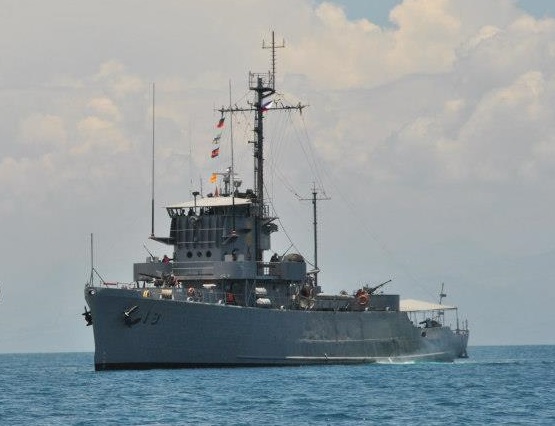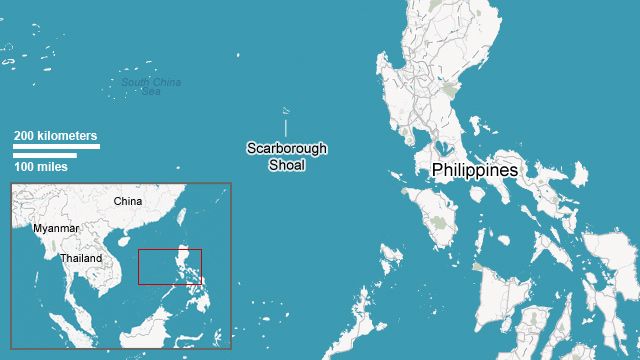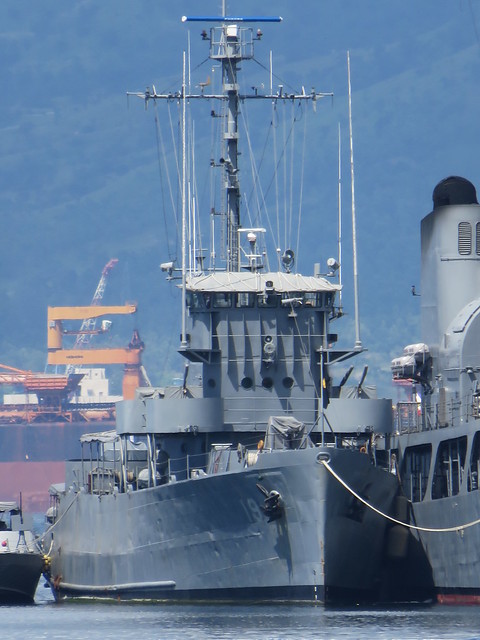Scarborough Shock: Decommissioned Philippine Navy Vessel Sinks Ahead of Joint U.S. Strike Simulation
The vessel, BRP Miguel Malvar—an 80-year-old World War II-era corvette once considered a stalwart of the Philippine fleet—was being towed in choppy seas when it began taking on water and sank roughly 30 nautical miles west of Zambales province, within proximity of the strategic Scarborough Shoal.
(DEFENCE SECURITY ASIA) – A decommissioned Philippine Navy warship slated to serve as a live-fire target during the high-profile “Balikatan” exercises with U.S. forces sank prematurely in the contested waters of the South China Sea, hours before the joint maritime strike drill was set to begin.
The vessel, BRP Miguel Malvar—an 80-year-old World War II-era corvette once considered a stalwart of the Philippine fleet—was being towed in choppy seas when it began taking on water and sank roughly 30 nautical miles west of Zambales province, within proximity of the strategic Scarborough Shoal.
“The decommissioned vessel, BRP Miguel Malvar, began to flood while it was being positioned roughly 30 nautical miles west of San Antonio, Zambales, before sinking at 7:20 a.m. at its designated maritime strike location,” said Philippine Navy spokesperson Capt. John Percie Alcos at a media briefing held at Naval Station Jose Andrada in Manila.
Alcos further confirmed that the ship went down only four nautical miles short of its intended target location, scuttling a key phase of the coordinated U.S.-Philippine naval firepower demonstration.
According to the Armed Forces of the Philippines, the vessel had no personnel onboard at the time of the incident, and the sinking occurred without casualties.
Despite the unexpected loss of the designated target platform, Balikatan participants from both armed forces continued with alternative live-fire scenarios in adjacent waters off Zambales later that Monday.
Balikatan is a major annual joint military exercise conducted between the Armed Forces of the Philippines (AFP) and the United States Armed Forces, designed to enhance interoperability, strengthen defense cooperation, and prepare both forces for real-world contingencies, including conflict scenarios, humanitarian assistance, and disaster response.

The BRP Miguel Malvar had originally been constructed in the 1940s as the USS Brattleboro (PCE(R)-852), serving with distinction in both the Atlantic and Pacific theaters, including combat operations in the Philippines and Okinawa.
Following its U.S. Navy decommissioning in 1965, the vessel was transferred to the South Vietnamese Navy in 1966 and rechristened RVNS Ngọc Hồi (HQ-12), before fleeing to the Philippines at the fall of Saigon in 1975 along with several other ships.
On April 5, 1976, the ship was formally absorbed into the Philippine Navy and renamed RPS Miguel Malvar, later designated BRP Miguel Malvar (PS-19) in 1980, marking the beginning of a four-decade operational career.
The Philippine Navy confirmed that the ship was deliberately chosen for the live-fire exercise due to its advanced age and unsuitability for conventional operations, noting it had long exceeded its intended service life.
“It’s an 80-year-old, deteriorated vessel that simply couldn’t withstand the heavy seas,” Lt. Col. John Paul Salgado told The Associated Press, underscoring the weather-related vulnerability of the aging corvette.
A U.S. Navy spokesperson revealed last month that the ship had been earmarked as a target for a precision strike by U.S. Marine Corps F/A-18 Hornets, as part of a joint demonstration involving coordinated aerial and maritime firepower.
According to a report by the Philippine News Agency (PNA), the live-fire strike was to combine U.S. and Philippine offensive assets in a multi-domain assault involving anti-ship missiles, aerial-delivered bombs, and naval autocannon fire.

The BRP Miguel Malvar had earned distinction as one of the most enduring vessels in the Philippine Navy, playing a critical role in bilateral exercises such as CARAT 2012, disaster response operations in Tawi-Tawi (2011 and 2020), and emergency relief missions in Bongao in 2018.
Its formal decommissioning took place on December 10, 2021, after over 45 years in Philippine service, and nearly 80 years since it was first commissioned under the U.S. flag.
The exercise was originally planned for open waters facing Scarborough Shoal, a contested maritime zone heavily patrolled by the China Coast Guard, People’s Liberation Army Navy, and suspected maritime militia vessels aligned with Beijing.
Scarborough Shoal—located just 137 nautical miles off the Philippine coast—has become one of the most volatile flashpoints in the South China Sea, where escalating confrontations between Chinese and Philippine forces have been recorded both on the water and in surrounding airspace.
The shoal is not only a vital fishing ground but also a strategic military outpost, lying within the Philippines’ 200-nautical-mile Exclusive Economic Zone (EEZ), as recognized by international maritime law under UNCLOS.
However, China continues to assert sweeping territorial claims across the South China Sea based on its controversial “nine-dash line,” a claim deemed illegitimate by the 2016 ruling of the Permanent Court of Arbitration in The Hague.

Despite that landmark verdict, Beijing has maintained and expanded its enforcement posture at Scarborough, converting the shoal into a flashpoint of geopolitical rivalry between China and the United States.
The U.S. Navy frequently challenges Chinese maritime claims by conducting “freedom of navigation operations” (FONOPs) near Scarborough, reinforcing its commitment to open sea lanes and international law.
The sinking of BRP Miguel Malvar, though unintended, highlights the convergence of history, geopolitics, and military modernization in one of the world’s most strategically contested maritime zones—where every maneuver is closely watched, and every incident carries the weight of potential escalation.
— DEFENCE SECURITY ASIA


